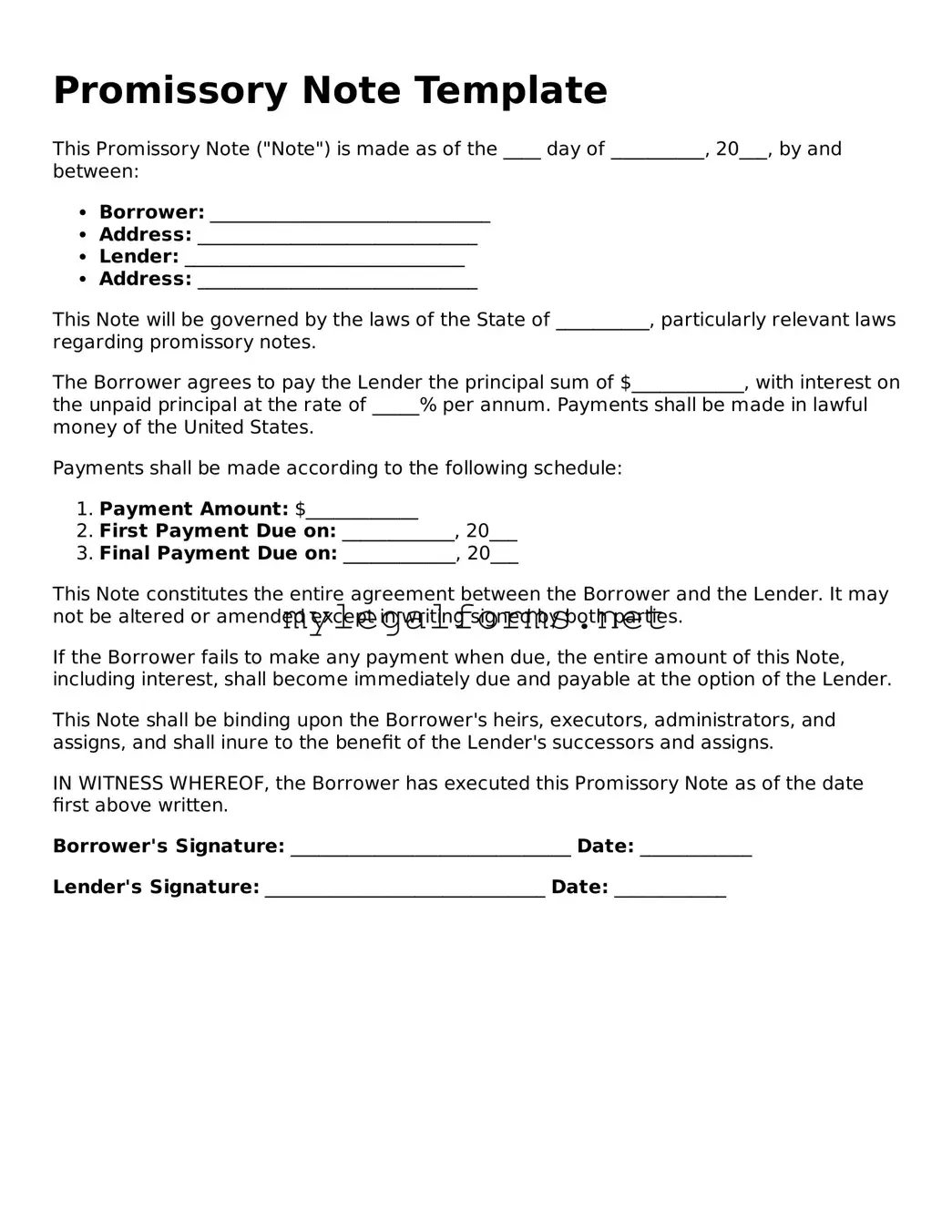Promissory Note Template
This Promissory Note ("Note") is made as of the ____ day of __________, 20___, by and between:
- Borrower: ______________________________
- Address: ______________________________
- Lender: ______________________________
- Address: ______________________________
This Note will be governed by the laws of the State of __________, particularly relevant laws regarding promissory notes.
The Borrower agrees to pay the Lender the principal sum of $____________, with interest on the unpaid principal at the rate of _____% per annum. Payments shall be made in lawful money of the United States.
Payments shall be made according to the following schedule:
- Payment Amount: $____________
- First Payment Due on: ____________, 20___
- Final Payment Due on: ____________, 20___
This Note constitutes the entire agreement between the Borrower and the Lender. It may not be altered or amended except in writing signed by both parties.
If the Borrower fails to make any payment when due, the entire amount of this Note, including interest, shall become immediately due and payable at the option of the Lender.
This Note shall be binding upon the Borrower's heirs, executors, administrators, and assigns, and shall inure to the benefit of the Lender's successors and assigns.
IN WITNESS WHEREOF, the Borrower has executed this Promissory Note as of the date first above written.
Borrower's Signature: ______________________________ Date: ____________
Lender's Signature: ______________________________ Date: ____________
